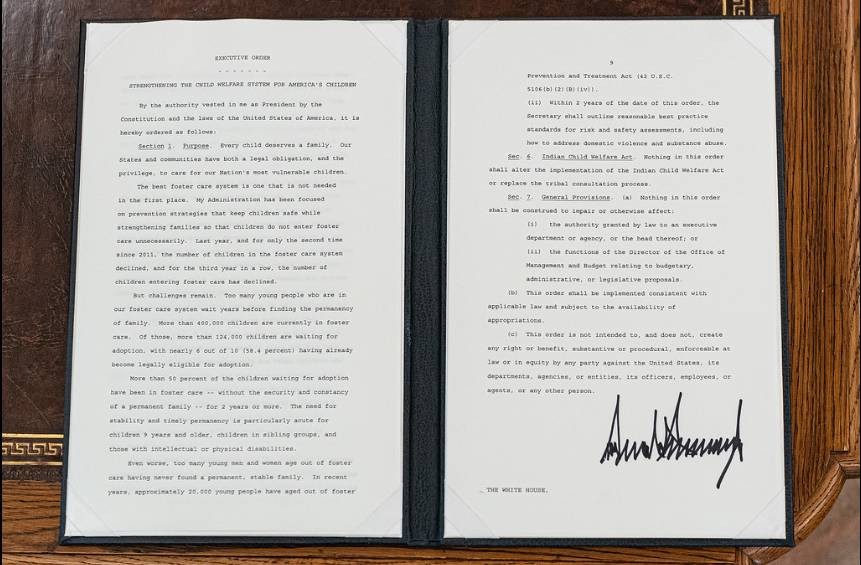|
Getting your Trinity Audio player ready...
|
Executive orders are a significant tool used by U.S. presidents to direct the operations of the federal government. These orders carry the force of law and are often used to manage government functions, enact policies, and provide guidance to federal agencies. However, there is no formal limit on the number of executive orders a president can issue, though they are subject to constitutional and legal constraints.
No Cap on Executive Orders
While there is no cap on the number of executive orders a president can sign, their use is bounded by the Constitution and federal law. Executive orders are typically issued to clarify or implement existing laws or policies, and they must remain within the scope of presidential powers granted by the Constitution. These powers are not unlimited, and executive orders that overstep legal boundaries can be challenged and invalidated.
Checks and Balances: Judicial Review and Congressional Action
Executive orders are not immune to scrutiny. One of the key limitations is judicial review, where courts have the authority to strike down executive orders that violate the Constitution or exceed the president’s authority. For example, if an executive order infringes on the rights guaranteed by the Constitution or conflicts with an existing law passed by Congress, the courts can declare it unconstitutional.
In addition to judicial review, Congress can also influence executive orders through legislation. If lawmakers disagree with a particular executive order, they can pass laws that override the order or limit its scope. For instance, Congress may pass new laws that amend or repeal actions taken by executive order.
Historical Context and Frequency of Use
Historically, the number of executive orders issued by presidents has varied widely. Franklin D. Roosevelt holds the record for the most executive orders, with over 3,700 orders issued during his four terms in office. In contrast, more recent presidents have issued far fewer orders, as political climates and governance styles have evolved. Despite this, executive orders remain a valuable tool for presidents, especially when they seek to enact policy changes quickly or address urgent matters within the executive branch.
Reasons for Voiding Executive Orders
Several factors can lead to an executive order being voided, including:
- Constitutional Violations: If an executive order is found to violate the Constitution, it can be struck down by the judiciary. For example, an executive order that violates the separation of powers or infringes on individual rights could be invalidated.
- Overreach of Presidential Authority: The president’s authority is limited to powers granted by the Constitution and laws. An executive order that exceeds these powers can be overturned.
- Conflicts with Congressional Legislation: If a president issues an executive order that conflicts with laws passed by Congress, the courts can declare the order invalid. Congress can also pass new legislation that overrides the executive order.
- Lack of Legal Basis: If an executive order lacks a clear legal or constitutional foundation, it can be challenged and overturned.
While executive orders remain an essential tool for presidential action, their scope is not unlimited. They must respect the rule of law, the Constitution, and the principles of checks and balances that underpin the U.S. system of government.
Here are some references that provide further context and details about executive orders, their limitations, and their legal implications:
- U.S. Constitution (Article II, Section 1) – The foundation for executive authority in the United States, including the president’s ability to issue executive orders. Available at: Constitution of the United States.
- Executive Orders: An Overview – Congressional Research Service (CRS) Report. This report provides a detailed look at executive orders, their use, and constitutional considerations. Available at: CRS Report on Executive Orders.
- “The Power of the Presidency” by Michael Nelson – This book explores the breadth of presidential powers, including the use of executive orders, and provides historical context for presidential actions. Available in academic libraries or via Oxford University Press.
- National Archives: Executive Orders – The U.S. National Archives offers a historical database of executive orders and explanations of their impact. Available at: National Archives Executive Orders.
- “The Law of Presidential Power: A Comparative Analysis” by Louis Fisher – Fisher’s work delves into the legal limits of executive orders and presidential authority. Available in academic libraries and via legal research platforms like JSTOR or HeinOnline.
- Judicial Review of Executive Orders – A detailed analysis of how courts review and potentially strike down executive orders. You can find various articles and case studies on legal research websites like SCOTUSblog or in legal textbooks.
These resources will offer additional depth and legal perspectives on the topic of executive orders, their history, and the constraints placed upon them.
Picture by The White House on Flikr PDM 1.0



